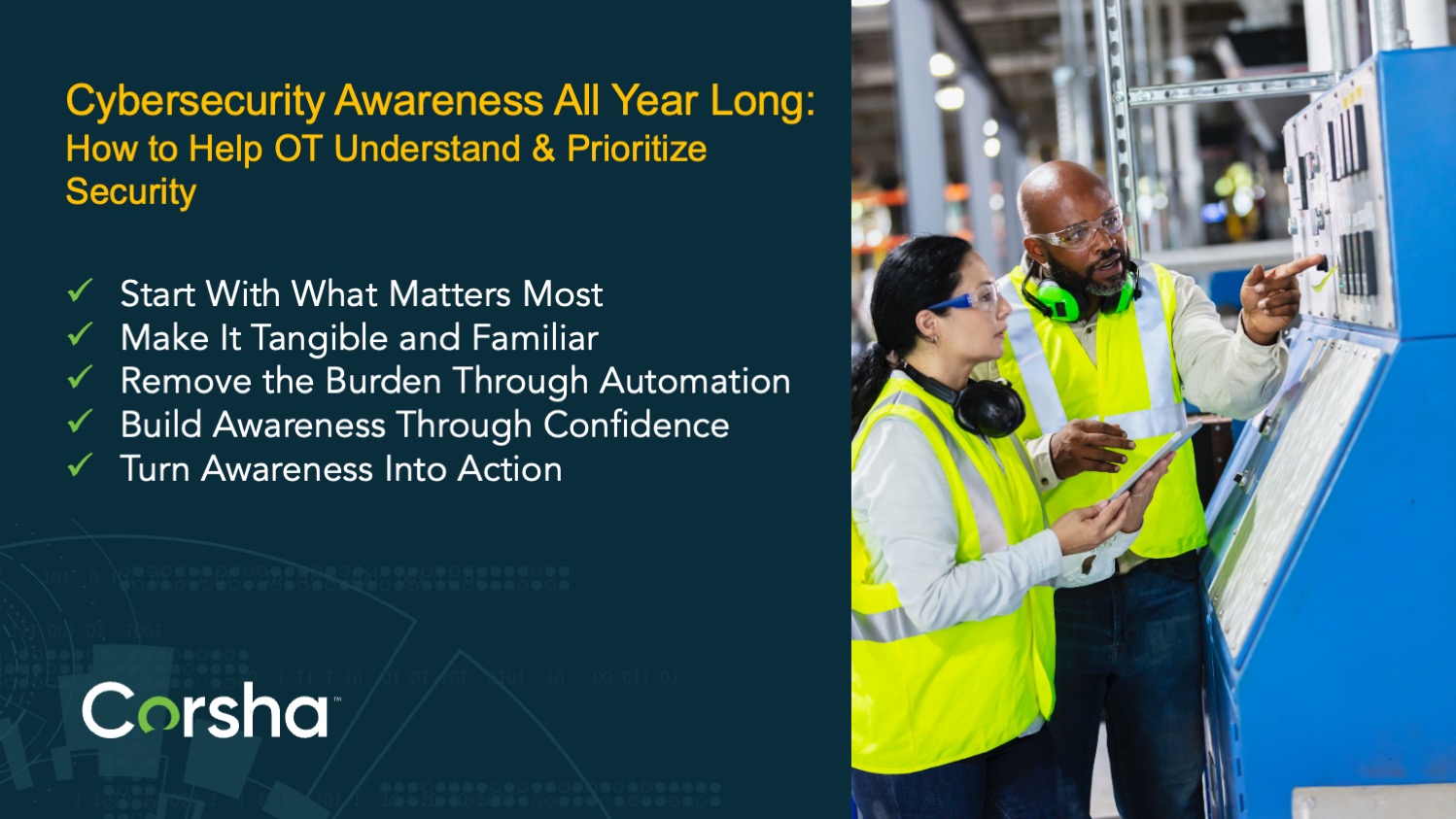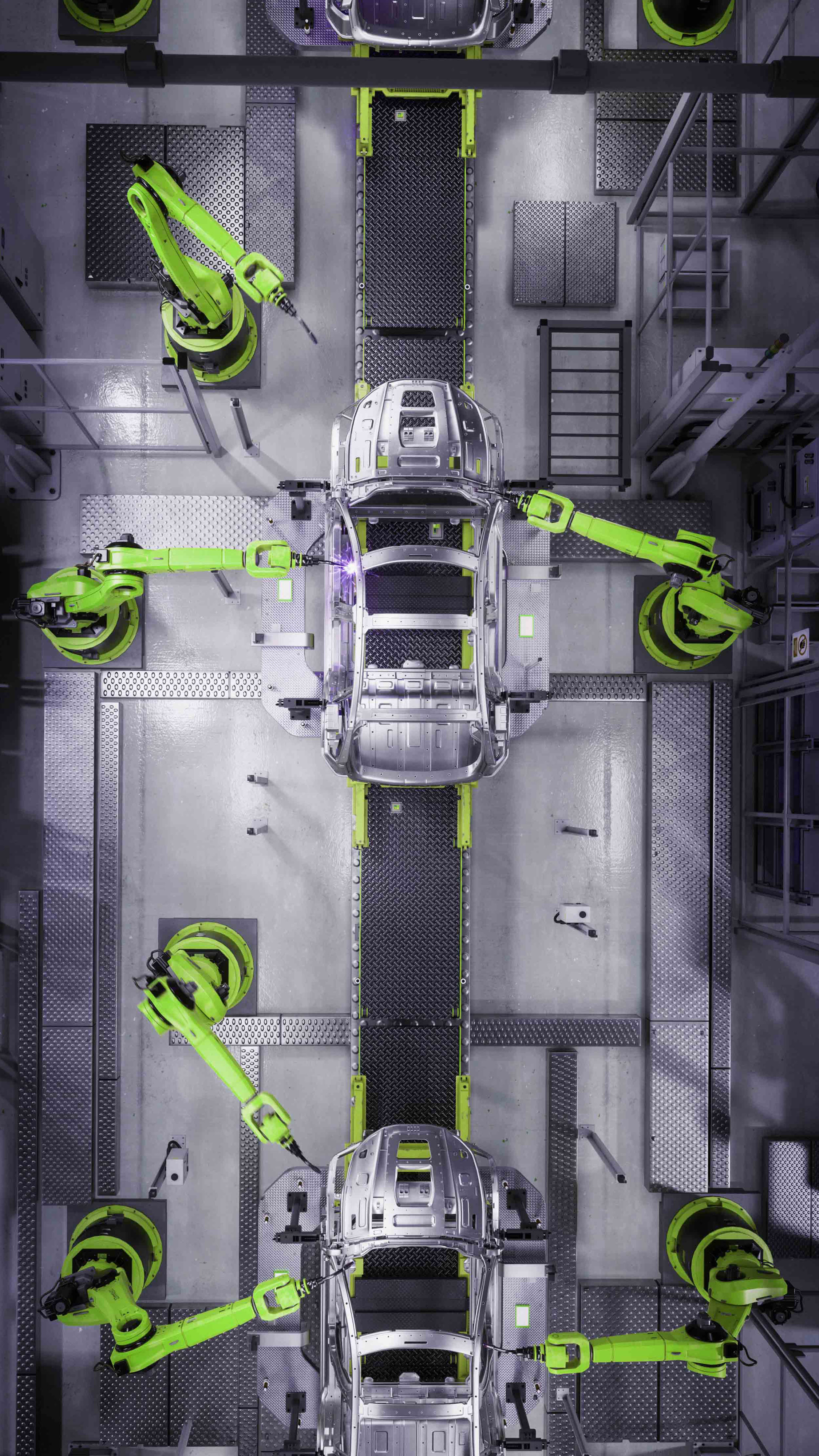Every October, Cybersecurity Awareness Month reminds us to stay vigilant online. Here are some actionable tips to jumpstart cybersecurity awareness going all year long for your operational systems and critical infrastructure. Operational systems are now critical to business continuity and safety, yet they often operate outside the spotlight of traditional cybersecurity awareness programs. This disconnect is no longer just a security risk… it's a business risk that threatens continuity and physical safety.
For OT teams focused on uptime and performance, cyber can feel like someone else’s problem. This month is the perfect opportunity to close that gap by showing that cybersecurity is not only essential, but also achievable without adding complexity or slowing operations.
1. Start with What Matters Most
To get operations teams to support cybersecurity, speak their language. Cyber threats do not just affect data; they actually impact uptime, safety, and resilience.
Encourage them to think about what happens when production suddenly stops: “A ransomware attack could halt an entire line for months, leaving operators idle and deliveries delayed.”
Or consider safety. “When a system command is altered or overridden remotely, a simple change in pressure or temperature can put both people and equipment at risk.” Those same controls that make processes efficient can, if tampered with, make them dangerous.
And when something does go wrong, recovery time matters. Secure systems recover faster because they have a solid foundation that prevents a small disruption from becoming a full shutdown. Cybersecurity awareness should be about protecting what makes OT successful, not introducing new obstacles.
2. Make It Tangible and Familiar
Once teams understand why cybersecurity matters, help them see what it looks like in practice. Abstract threats rarely drive action, but real examples do.
Use relatable stories, not technical jargon. Talk about times when an unexpected shutdown delayed shipments, or when a small misconfiguration created a production issue. Show how those incidents could just as easily be caused by a cyber event.
Use real-world examples to show how cyber incidents affect production, safety, and supply chains. Seek examples from your industry, from your own organization, or from personal experience to paint a vivid picture. Look for stories like, “This cyber incident didn’t just crash an app — it shut down a line.” When OT teams can visualize the impact and risk, they are far more likely to act.
3. Remove the Burden through Automation
OT teams are already experts in automation, so position security in the same way. Bring in security automation that does the work for them and makes it easy to ensure the right controls and access processes are always in place. Help teams think of it as “a machine that can log in securely on its own, just like you do with your badge.”
This approach simplifies protection, speeds adoption, and eliminates friction. There are no extra steps, no human intervention, and no production slowdowns. When security runs automatically, teams can focus on operations while knowing that every connection is protected.
4. Build Awareness Through Confidence
Fear-based messaging may grab attention, but it rarely builds lasting buy-in. Instead of warning what could go wrong, show how modern cybersecurity practices make operations stronger and more reliable.
Help teams see that cybersecurity is not there to slow them down or take control away. It exists to protect what they already care about: keeping systems running, maintaining safety, ensuring stability and helping them go faster with confidence. When people understand that security helps them do their jobs more confidently and predictably, they will naturally support it.
Awareness grows when teams see that protection can be simple, automatic, and dependable. Confidence turns cybersecurity from a checklist into a shared value that strengthens every part of operations.
5: Turn Awareness Into Action
Awareness only matters when it leads to progress. Start small and make it real. Pick one simple improvement that your team can own this month.
Maybe it’s replacing shared logins that everyone uses on the floor with a password manager like KeePassX. Or reviewing how engineering workstations and vendors connect into your systems and scheduling that access instead of leaving it always open. Even mapping out the top few connections between systems can reveal surprises and spark quick fixes.
The goal is not to overhaul everything at once; rather it’s to build momentum. Every small, visible win builds confidence and proves that cybersecurity can fit naturally into day-to-day operations. Keep the mindset simple: start small, prove it works, and the rest of the team will follow. Once people see that progress is possible without disruption, security becomes something everyone supports, not something handed down from outside.
How Corsha Helps
Corsha makes it easy to put cybersecurity awareness into action across OT environments. In fact, Corsha was founded on the idea that cybersecurity should be accessible, made for real life, and built in from the start. It should work quietly in the background to keep your core business secure and running smoothly.
The Corsha solution is the easy path to secure automated access and communication. It automatically discovers every machine connection, continuously authenticates it, and enforces security policies in real time. There are no manual credentials, no added engineering work, and no disruption to production.
With Corsha, organizations gain the confidence that identity-centric security is automatically built in and that every machine identity and connection has been verified. That is what true cybersecurity awareness looks like: protecting the operational systems that run our world, effortlessly and continuously. Book a Corsha demo to learn more.
Put these steps to work to raise cybersecurity awareness across your operations all year long. Start conversations in your plants, in the field, and in control centers. Awareness begins with understanding, but it succeeds when everyone from engineering to maintenance sees that security can be simple, automated, and built into how they work every day.



